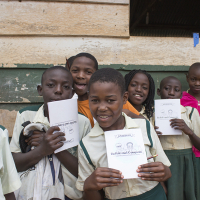
This is an excerpt of a blog originally published on Evidently Cochrane.
In this blog for our #UnderstandingEvidence series, Matt Oxman talks about the Informed Health Choices project, which helps people sort the wheat from the chaff of evidence about treatment effects, starting with school children.
Evidently Cochrane makes evidence accessible, but so does Gwyneth Paltrow on her blog Goop. The difference is in the quality of evidence. However, if most people cannot tell apart a systematic review from Paltrow’s anecdote about the benefits of “bee venom therapy”, where do you think they will go for their health advice? Cochrane certainly cannot compete in terms of celebrity.
“I was recently given ‘bee venom therapy’ for an old injury and it disappeared.” ~ Gwyneth Paltrow
Before the will to access high-quality evidence must come appreciation of what makes high-quality evidence. Without this understanding, people are prone to be misled by unreliable health claims and make uninformed choices, leading to waste and unnecessary suffering much more serious than bee stings.
This is the problem that my colleagues and I—mostly based in East Africa and Norway, but also the UK and other countries—are addressing with the Informed Health Choices project. We are developing and evaluating learning resources to help people separate the wheat from the chaff of evidence about treatment effects, starting in primary schools.
